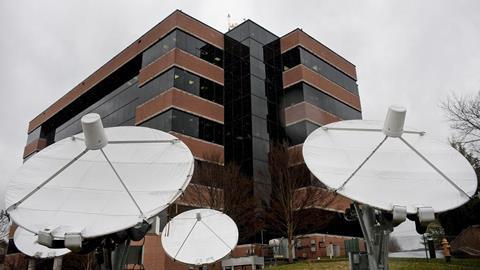IBC Innovation Awards finalist Sinclair Broadcast Group worked with TeamCast to develop a revolutionary approach to terrestrial transmission.
Sinclair Broadcast Group operates 233 television stations in 108 US markets.
The standard American model is “high tower, high power”: a single mast and transmitter. The new approach, which was submitted for the IBC2017 Innovation Awards, was developed by TeamCast and ONE Media for Sinclair. It takes a cellular approach, using mini-transmitters just where they are needed in a large single frequency network to provide a common platform for on-air and online services.
TeamCast’s Eric Pinson explains TeamCast’s technical contributor to the project.
What was the initial challenge faced by the end user: technical, creative or commercial?
There was a dual challenge. On the business side, the new way the audio-visual contents are consumed (non-linear and multi-screen) and monetised (personalised advertising) through internet puts a lot of pressure on the traditional broadcast TV models. New ways of distributing programmes are needed, which enables new ways of monetising the service.
The idea was to adopt a totally new architecture for the broadcast networks so that they can be more flexible, more open and allow content personalisation.
On the technical side, the challenge was to imagine a new solution meeting the requirements of these business objectives. That means reinventing the broadcast distribution networks, introducing less centralisation, increasing the number of transmitters while reducing the size of the cells, and using the Single Frequency Network technique enabled by modern DTV systems.
How did you collaborate to find a solution? Talk us through the process and timeline.
The collaboration with Sinclair Broadcast Group for this project started two years ago. In fact Sinclair has been working on this new ideas for many years, at the same time the ATSC standardisation group was working on ATSC3.0.

TeamCast developed the new SFN solution with its innovative ST2L concept (Studio to transmitter Link) and Sinclair adopted it. With the support of ONE Media, a first broadcast was performed at the CES 2016. The first pilot SFN with ST2L was demonstrated at the NABshow 2016.
The world first real size experimental network was built in Baltimore in summer 2016 and is currently extended in order to be more representative of the solution’s benefits in terms of new services.
What challenges did you face when collaborating with the technical partners in order to develop a solution?
In such a project, implementing the new architecture means integrating (assembling) many bricks from many suppliers, for encoding, signalling, formatting, distributing and transmitting the content. It is always a challenge to do that for the first time, in such a disruptive context.
Hopefully, the relationship with the end-user and other technical partners was already running for some time, and we made it successfully. One key technical issue we met was to get on-field IP connections with sufficient bandwidth and reliability.
What makes your project unique from your competitors?
First the architecture is very unique, completely disruptive from what has been used during the last twenty years after the emergence of Digital TV. And still, no one is offering a centralised modulation solution, capable of being a “cloud modulation” solution in the short term. Another unique point is our capacity for designing and implementing such an advanced solution in a short time. This was made possible by TeamCast’s unique expertise in
Another unique point is our capacity for designing and implementing such an advanced solution in a short time. This was made possible by TeamCast’s unique expertise in implementation of OFDM modulation and SFN technique and by the support of ONE Media’s team.
As a result of the project, what has the outcome been for the end user? What is the benefit for the viewer/consumer?
The outcome of the project is a real size demonstration and verification of the new architecture and of its capability to carry new services and generate new business opportunities. After full-scale deployment, it will mean new audio/video/data services, fluidly and transparently delivered to the consumer through both broadcast and broadband networks, in all situations - for instance on the move, with data push services to the cars.
What lessons have you learned as a result of this project? Have they resulted in any changes to the way you approach future projects?
After more than 20 years of steady digital TV broadcast, we discovered that it is absolutely possible to reinvent the way we distribute audio visual content, to respond to the new consumer expectations and to develop new ways of monetisation, in the same way, broadband is constantly reinventing and improving the way it gives access to content.
We are demonstrating that both broadcast and broadband solutions are not “isolated silos” and can collaborate to maximise the consumer experience.
We also verified again that a solid, iterative process is the right approach to implement large, innovative systems on the field. From the labs to the field, going ahead by small steps is necessary for the whole group to understand the issues and fix them. Several intermediate proofs of concepts were necessary before the whole thing went smoothly. We won time by going slowly!

Why is it important to participate in the IBC Innovation Awards?
IBC has always been the key yearly event for TeamCast to present and promote its transmission gear to manufacturers, integrators and operators. Beyond the show and the conference, the IBC Innovation Award is the right place to share this technical disruption as much as possible with the broadcast community, to promote it, and get recognition for the teams who made it possible.
IBC2017 Innovation Awards ceremony takes place Sunday 17 September
























No comments yet